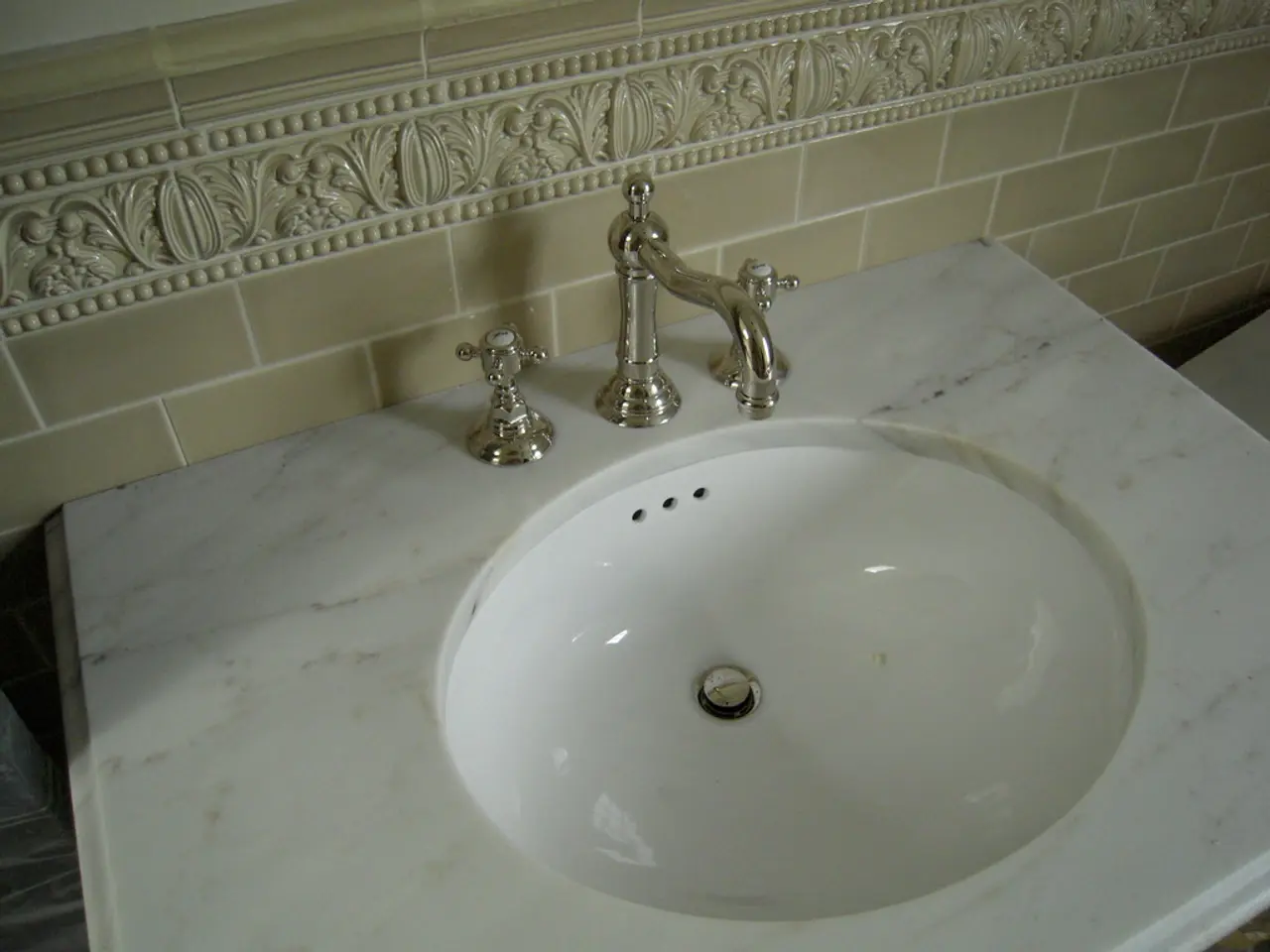Mastering the Art of Installing a Kitchen Backsplash Tile Yourself
In the heart of every home, the kitchen is a space that demands both functionality and style. One way to elevate its aesthetic appeal is by installing a stylish and easy-to-maintain kitchen backsplash. This article will guide you through the process of installing a DIY peel-and-stick kitchen backsplash using SimpleMat as an adhesive base.
Before you begin, it's essential to prepare your wall surface. Ensure the wall is clean, dry, and free from dust, grease, or any loose materials. A smooth surface helps the adhesive stick better.
Next, measure the area where you want to install your backsplash tiles and cut the SimpleMat adhesive sheets accordingly. SimpleMat acts like a double-sided sticker, making the installation process straightforward.
Peel off one side of the backing film from the SimpleMat and stick it firmly to the wall, pressing it smoothly to avoid air bubbles. Then, peel off the other side of the SimpleMat backing to expose the adhesive. Press your peel-and-stick backsplash tiles firmly onto the adhesive surface, pressing with a slight twist to securely bed the tiles and reduce air pockets.
Repeat this process, aligning each tile precisely to create a clean, uniform backsplash. If needed, using a hair dryer to warm adhesive areas can help soften and reposition tiles.
Once the tiles are in place, grout them if your tile type requires it. According to one source, after sticking the tile with SimpleMat, it's ready to grout directly. Clean off any excess grout and let everything dry properly before use.
Backsplash tiles come in various sizes, shapes, colours, and materials, allowing for various kitchen backsplash layout ideas. Laying out the kitchen backsplash before tiling ensures everything is lined up correctly. Mosaic tiling sheets can simplify the layout process and be cut to accommodate outlets, vent hoods, or unique design elements.
Preparation for a DIY kitchen backsplash project involves clearing the work area, priming the wall, and measuring the backsplash area. Determining the width and height of the space gives the square footage needed for the backsplash. Using tile spacers is important to ensure symmetrical grout lines and they are available in various sizes and shapes.
Adding a strip of metal or plastic trim along the edges of the backsplash, especially if it will be exposed to water or steam, is recommended. When working with a professional installer, it's beneficial to be on-site during the backsplash installation to communicate preferences.
Measuring the backsplash area determines the amount of tile needed, including an additional 10% for mistakes or waste. Planning for areas where tiles need to be cut or for a gap between the backsplash and upper cabinets is essential.
A kitchen backsplash protects the wall behind the sink and provides a design element. Priming the wall helps ensure a smooth surface for the adhesive to bond well. If using a self-stick or peel-and-stick backsplash, the SimpleMat should be cut to fit the area and attached with super-strong glue dots.
After grouting, a quality thinset mortar should be used, and a grout sealer applied to reduce the likelihood of staining. Tile backsplash installation requires a notched trowel, rubber float, mortar or mastic (sold separately), level, and a snap cutter or wet saw depending on the tile chosen.
Before applying mastic, the wall should be cleaned thoroughly, let dry completely, and any grease splatters should be removed with a degreaser. A kitchen backsplash is available in various styles, materials, and colours, making it a versatile addition to any kitchen design.
With these steps, you can transform your kitchen with a DIY peel-and-stick kitchen backsplash using SimpleMat, creating a mess-free, easy-to-do backsplash installation that secures your tiles to your kitchen wall.
A kitchen backsplash not only protects the wall behind the sink but also serves as a design element, adding a stylish touch to your home-and-garden lifestyle. To maintain a smooth surface for the adhesive to bond well, it's essential to prepare your wall before beginning the installation, ensuring it's clean, dry, and free from dust, grease, or loose materials.




